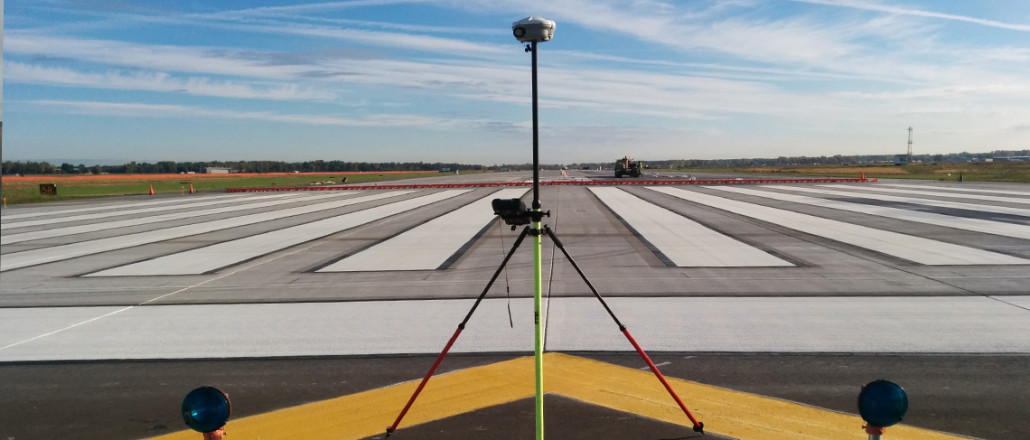 Geopro can help airports to understand the obstacles impacting their operations as part of a cost-effective onsite evaluation developed in response to the FAA Interim Policy from November 18, 2013. In that Policy, the FAA issued guidance regarding penetrations of the 20:1 visual area surface for instrument approach procedures. This guidance became effective on January 6, 2014, and the FAA has cautioned that they will be taking immediate action on 20:1 penetrations when identified, often resulting in increased minimums and elimination of night operations for airports.
Geopro can help airports to understand the obstacles impacting their operations as part of a cost-effective onsite evaluation developed in response to the FAA Interim Policy from November 18, 2013. In that Policy, the FAA issued guidance regarding penetrations of the 20:1 visual area surface for instrument approach procedures. This guidance became effective on January 6, 2014, and the FAA has cautioned that they will be taking immediate action on 20:1 penetrations when identified, often resulting in increased minimums and elimination of night operations for airports.
Quoting the FAA, they “highly recommend Airport Sponsors to take a proactive approach by reviewing all approach surfaces in advance of any flight check schedule to ensure they are clear, including any planned approaches depicted on the Airport Layout Plan (ALP),” noting that, “if an airport is part of an [FAA] review that uncovers obstacle penetrations, there is a limited amount of time to act before procedures are impacted.” To get a general sense of when your airport’s procedures are scheduled for review, the FAA has published its procedure review schedule. Although the schedule does not specifically state when the FAA will begin its reviews, they typically commence 30 to 60 days prior to the “Due Date” listed in the table.
Evaluation Procedure:
The 20:1 visual area surface is described in Section 3.3.2.c of FAA Order 8260.3B, United States Standard for Terminal Instrument Procedures (TERPS). The purpose of the surface is to protect aircraft during the last stages of the approach procedures when pilots transition from instruments to visual guidance. Objects penetrating the surface must be lowered or illuminated to ensure that pilots of approaching aircraft can see them. If they cannot be seen, the visibility minimums associated with the approach may need to be increased or nighttime use of the procedure may be disallowed.
Geopro will visit your airport and after measuring the runways and determining the latitude, longitude, and MSL altitude of the runways ends, will model a 20:1 Visual Surface in CAD-based environment with aerial photography as a base map. The team will then set up our high accuracy total-station equipment so that the 20:1 surface is aligned with the system optics. This way, objects penetrating the surface will be visible and can be located. Crews will then use our proprietary software and survey methodology to locate the obstacles and generate 3D coordinates at the obstacle top. Attributes of the obstacle, such as type, height, and lighted condition will also be documented. A final plot of the survey results will then be generated to share with airport stakeholders.
Although visual area surfaces have been defined in TERPS for many years, the FAA began reviewing these surfaces more systematically in early 2015. Initially, the FAA would take immediate action—raising visibility minimums and/or disallowing night operations—via NOTAMs to address obstacle penetrations that were identified. Unfortunately, several affected airport operators found that the obstacle data FAA used to make its determinations were erroneous (e.g., obstacles that had already been removed, obstacles that were depicted in incorrect locations). Other airports expressed concern that there was limited advance and post-NOTAM coordination between the airport and the FAA regarding 20:1 penetrations.
In response to these and other concerns from airport operators, the FAA developed established interim policy guidance to address penetrations of the 20:1 Visual Area Surface of instrument approach procedures. The interim policy incorporates a validation step during which airport operators can address erroneous obstacle data before NOTAMs are issued and provides a risk-based framework to address obstacle mitigation actions and timeframes.
Geopro Consultants provides obstruction validation services to correct the FAA’s erroneous obstacle data and identify legitimate threats to your airspace safety. Contact us today to find out more about potential risks to your approach minimums and nighttime operations.
